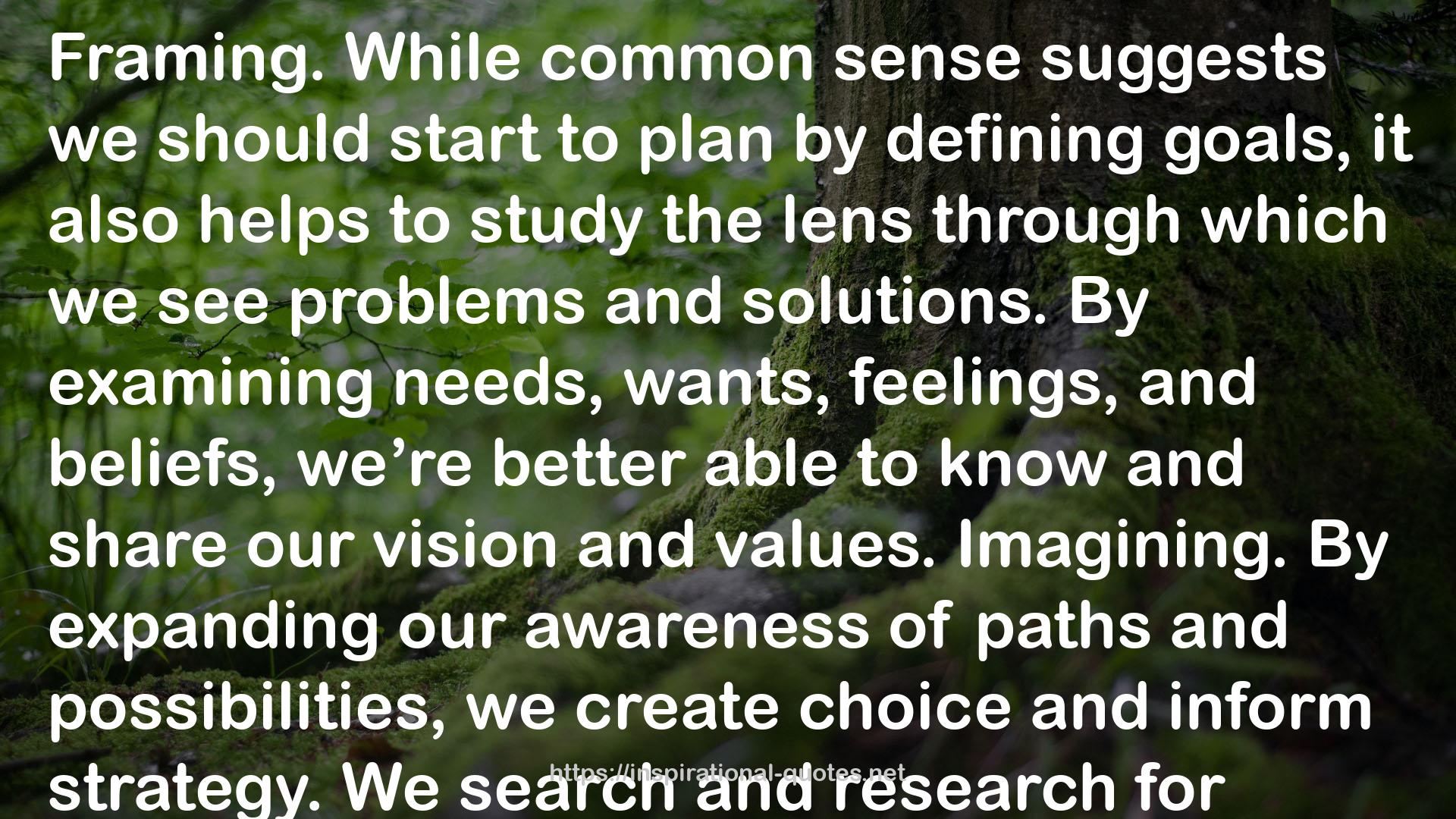" Framing. While common sense suggests we should start to plan by defining goals, it also helps to study the lens through which we see problems and solutions. By examining needs, wants, feelings, and beliefs, we’re better able to know and share our vision and values. Imagining. By expanding our awareness of paths and possibilities, we create choice and inform strategy. We search and research for information, then play with models to stray beyond knowledge. Sketches draw insights that help us add options and refine plans. Narrowing. After diverging, it’s critical to converge by prioritizing paths and options. This requires study of drivers, levers, estimates, and consequences, as the value of a strategy is tied to time and risk. Deciding. While decisions are often made in an instant, the process of committing to and communicating a course of action merits time and attention. Instructions are essential to the rendering of intent. Words matter. So do numbers. Define metrics for success carefully. Executing. The dichotomy between planning and doing is false. In all sorts of contexts, we plan as we travel, build, or get things done. Reflecting. While it helps to ask questions throughout the process, we should also make space to look back at the whole from the end. Long before the invention of time, people used the North Star to find their way in the dark. In the future, I hope you will use these principles and practices to make your way in the world. Figure 1-10. Principles and practices of planning. "
― Peter Morville , Planning for Everything: The Design of Paths and Goals
